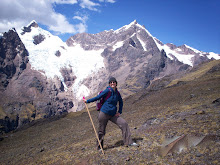I started teaching the concepts of fiction and nonfiction with my fifth grade book group this week and I ran into a few challenges that I hadn’t expected.
First, I let them choose the book (from a few options that I gave them based on their reading level and the book sets that I found in libraries around school) and they choose Vampires Don't Wear Polka Dots by Debbie Daley (part of the Bailey School Kids series). The book ended up being my first challenge: it isn’t one that I would have chosen for this particular topic. Still, as we’re halfway through the book and they’re enjoying reading it, I surged ahead.
Next challenge: how to teach the idea of nonfiction in a fiction book group. In discussion with my colleagues, we talked about focusing on the idea that authors use nonfiction to enhance fiction. I liked this idea a lot. First, because I think nonfiction and fiction are typically taught separately, and this would merge the two. Also, it’s a great way to encourage kids to think about what authors do to influence the readers’ experience with a story or book. And, because I tend to read more nonfiction, memoirs, and narrative nonfiction than novels, and would like to bring more nonfiction into my classroom and this seems like a great way to do just that.
I kicked off the topic on Friday with the question: Do authors do research in order to write fiction? Why or why not?
Right away, one of my students answered that yes, authors do research because they have to get the details right (in our current story, the details of what vampires are supposed to look like and do). The discussion that resulted was a great one—a million miles from my actual lesson plan, and I couldn’t have been happier.
We talked about the kind of research that an author would have to do in order to write a book for kids. They’d have to get the dialogue right, capture the experience of kids talking on the playground, or make a classroom “feel” right to a kid who’s reading it, all things that an adult would have to do research to figure out.
We also talked about the kind of research that an author would have to do to write another kind of book. I had brought in the novel I was reading, House Rules by Jodi Picoult, a story about a main character who has Asperger’s. I talked about my experience of reading the book and liking that Picoult had done the research that helped her write a believable character and, if she hadn’t, I would have shut the book and never read another book by her because I wouldn’t trust her to tell an authentic story. (To this, one of my students suggested that if Picoult hadn’t written a story that felt right to me I should sue her, and I told him that, while I appreciated the emotion behind his idea, I thought maybe not buying another book would be penalty enough.)
In all, I was pretty impressed with my students. The discussion went in an entirely different direction than I’d expected, and, especially for the introduction of a topic, involved much less lecture and more question and answer. I think in the long run, this will be a topic that we return to again and again as we read, rather than a one-time lesson cycle.
Here are some discussion questions for the theme of nonfiction in fiction:
· How does nonfiction enhance fiction?
· What does it mean for a book to be “authentic”?
· How does research make a book authentic for the reader?
· What do authors (who are grown-ups) have to know about kids to write child characters?
· How authentic is the book you’re reading? What do you think the author had to do to create such an authentic story? Or, what should the author have done to make the story more authentic?

